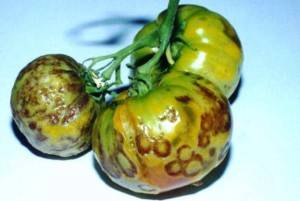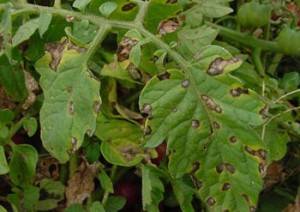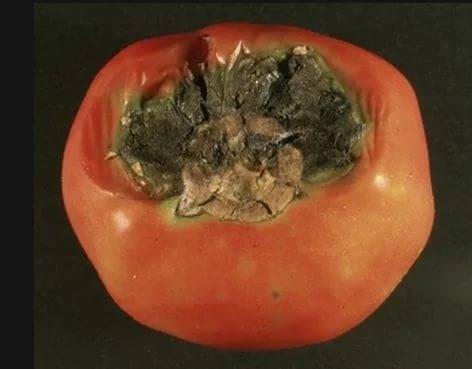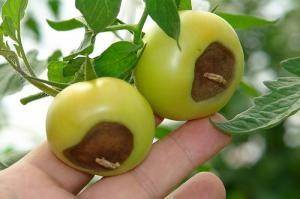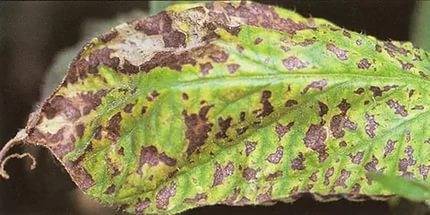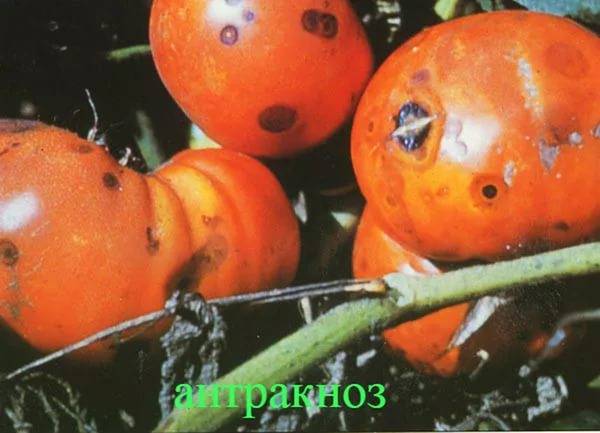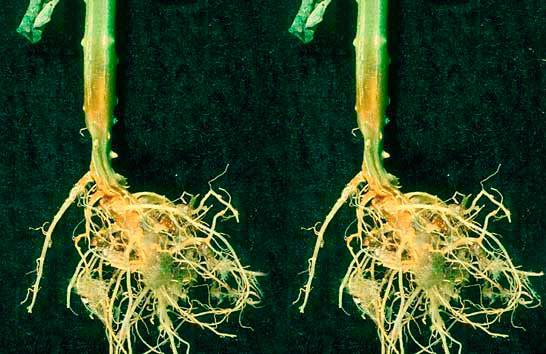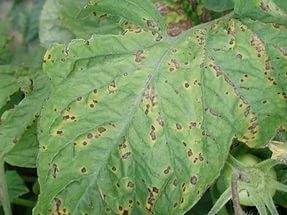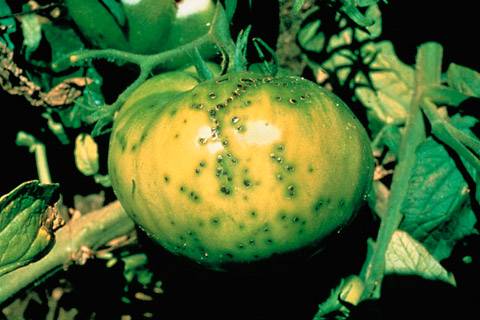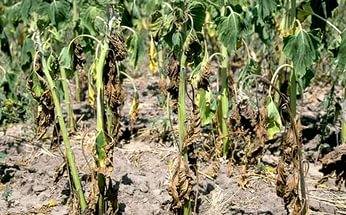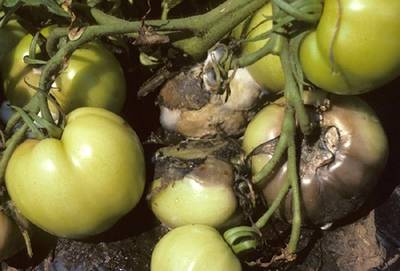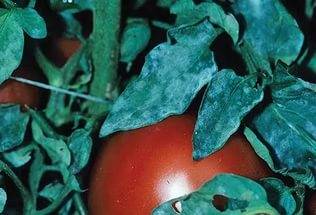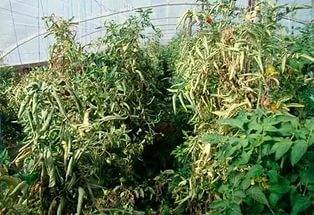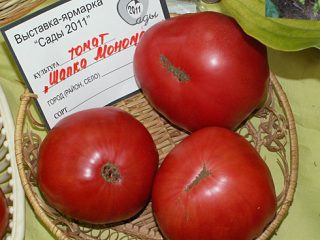Inveterate vegetable growers have had to deal with tomato disease more than once. Occasionally, weather conditions are to blame for the appearance of the disease. However, as practice shows, most often the culture suffers from the mistakes made by the gardeners themselves. Usually serious ailments end in the death of culture. But some diseases tomato seedlings amenable to treatment if the necessary measures are taken in time.
The causes and methods of curing culture at home
On many forums, most of all there are questions about how to save tomato seedlings from death, because the work of a whole month is at stake, a lot of wasted nerves and money. Some complain that after the picking of the seedlings, most of them disappeared, and the surviving plants are so weak that it is better to throw them away.
Growing tomato seedlings at home is not an easy task, because this delicious vegetable is loved not only by people, but also by many parasitic microorganisms. There are two ways to get healthy tomato seedlings:
- The easiest and easiest way to get good tomato seedlings is to buy ready-to-plant plants. However, this method does not guarantee complete protection against diseases, because no one has seen the conditions in which the plants were grown. Many dishonest entrepreneurs feed seedlings before selling them. As a result, the purchased juicy and beautiful plants after planting begin to wither, hurt, and some even die.
- The second way to get a rich harvest of tomatoes is to grow seedlings yourself. Here you will have to be patient, learn how to independently determine the ailments of tomatoes, carry out their treatment, and also take preventive measures.
When growing tomato seedlings, it is advisable to adhere to one important rule: before spraying plants with chemicals, it is necessary to accurately determine the causative agent of the crop disease. In addition to the fact that an incorrectly selected drug is useless, the harmful substances in its composition will accumulate fruits over time. Now we will try to consider on photo of tomato seedling disease, we will figure out why they arise and what methods of struggle exist.
Late blight
This disease of tomatoes is usually called late blight... A disease is nothing more than a fungus. Where do fungal spores develop best? Of course, where there is dampness, temperature drops, a large thickening of plants. Almost all plantings of tomatoes suffer from late blight in the rainy hot summer. Initially, the disease manifests itself on the leaves of tomatoes by the formation of black areas, followed by drying. Further, these symptoms are transmitted to the fetus.
The video tells about late blight:
They begin to fight late blight on the twentieth day after the tomatoes are planted in the ground. The first time it is necessary to spray the seedlings with the "Zaslon" preparation. 20 days after the first treatment, tomato seedlings must be sprayed again, but with a different preparation - "Barrier". After the third inflorescence appears on the plants, the tomatoes are treated with a solution prepared from 10 liters of water, 1 g potassium permanganate and 1 cup of garlic heads twisted in a meat grinder.Approximate solution consumption when spraying - 0.5 l / m2... Instead of these ingredients, the solution can be prepared from 10 liters of water and two tablets of the drug "Oxyhom".
Mosaic
A very dangerous viral disease is accompanied by the loss of fruits and plants themselves. Mosaic is often seed-borne. That is why it is imperative to pickle tomato grains in a 1% solution of potassium permanganate. The disease is characterized by pale spots on the leaves and fruits. In this case, a change in the shape of the leaf is observed, the ovary stops, the plant turns yellow and gradually dries up.
It is useless to cure the mosaic. The affected tomato is removed from the garden, after which it is immediately burned. For prevention, tomato seedlings are watered with 1% potassium permanganate solution twice a day with an interval of three weeks. Spraying with low-fat milk helps a lot - skim milk with the addition of 1 tsp per 1 liter of liquid. urea. Tomatoes are processed every 10 days.
Cladosporium
This fungal disease is also called brown spot or leaf mold. Most often, the disease spreads to tomatoes growing under a film cover. The first lesion occurs on the back of tomato leaves, which is expressed by the formation of brown spots with a rough bloom. Over time, a leaf with a plant dry up, and the matured spores of the fungus are transferred to a healthy tomato.
Cladosporium develops if the greenhouse is cold and too humid at night. The gardener himself can contribute to the disease of tomatoes by watering the plantings with ice water. These factors must be taken into account and taken as measures to get rid of the disease. For prophylaxis, seedlings are sprayed with the "Barrier" or "Zaslon" preparation. Before planting tomatoes, the greenhouse is disinfected with copper sulfate.
Fomoz
Fungal disease is also called brown rot. Only the fruit suffers from the disease. A small speck forms on the back of the tomato around the stalk. In size, it grows only after the entire tomato inside has already rotted out. That is why many vegetable growers start to notice this disease late.
It will not be possible to cure diseased tomatoes, you can only prevent the spread of the fungus. First, you need to get rid of excess moisture. Secondly, avoid applying fresh manure under the plants. For disinfection, tomatoes are sprayed foundation or the drug "Zaslon". All tomatoes showing rot must be picked and burned immediately.
Top rot
Top rot can be seen on green tomatoes... The fruit is covered with a spot that is slightly depressed inside the pulp. Moreover, the affected area can be dry or damp, and also have a different color: from black to light brown. The cause of the onset of the disease is a lack of moisture or calcium, as well as an excess of nitrogen.
The development of top rot can be prevented by regular watering of tomatoes. For spraying, prepare a solution of 10 liters of water with the addition of 1 tbsp. l. calcium nitrate.
Gray rot
This fungus is the most offensive for the grower. The ripening fruits suffer from the disease, but even green tomatoes can become infected. This usually occurs at the end of the fruiting of the crop in the fall in cold and rainy weather. Small round spots appear on the tomato, gradually developing into a large watery rot. Outwardly, gray rot is often mistaken for phytophthora. In addition to the fruits themselves, the entire plant is affected over time.
To effectively combat the disease, only the removal of the entire plant is acceptable.The soil where the tomato grew is disinfected, and healthy tomatoes are sprayed with antifungal drugs.
Alternaria
If brown areas appear on the back of a tomato leaf, you need to sound the alarm. Over time, the leaves of tomatoes completely turn brown, dry up and crumble to the ground. Plant stems are next to rot.
Only chemical preparations will help to get rid of dry rot. Fugicides have proven themselves best. Spraying is carried out after the first signs of the disease appear, and then repeated after 2 weeks.
Anthracnose
The disease affects all parts of the tomato plant. The weakest point is the root system and the fruit. Moreover, the tomato is already ripe, which is a shame. Initially, small rotten dots appear, increasing in size over time.
It is impossible to cure the affected tomato, but the development of the disease can be prevented by spraying with the preparation "Poliram" or "Novosil".
Stem rot
If you take a tomato as a whole, then in a plant this rot most often affects the stems. Hence the name of the disease. Usually, brown depressions appear at the base of the stem. As the rot spreads throughout the tomato stem, the leaves begin to turn yellow and crumble. The result is that the tomato dries up.
The development of the disease can only be prevented by spraying tomatoes with preparations containing copper.
Root rot
Greenhouse tomatoes most often suffer from the disease. It is impossible to immediately see the rotting root, but the first signs can be identified by the withering aerial part of the tomato. This ailment is typical for both tomatoes and cucumbers. It is undesirable to plant tomatoes in a greenhouse, where cucumbers grew in the garden last year, or vice versa.
You can try to save the affected tomato by watering with the "Zaslon" preparation. But it is better to remove the tomato and pickle the soil with a solution copper sulfate... The best option is to replace the top layer of the earth, plus etching with copper sulfate.
Mottling
A bacterial disease destroys the leaves of tomatoes. On the surface, brown dots appear, eventually increasing into oblong yellow spots. After hitting the entire surface, the leaf dies off and falls to the ground.
Tomato plantations can be saved by spraying with appropriate preparations. Fitolavin has proven itself quite well.
Spotting
The same bacterial disease as mottling. The ailment on the tomato is manifested by brown dots of different shades. Moreover, not only leaves, but also fruits can be covered with dots.
You can fight spotting by spraying tomato plantings, for example, with the same "Fitolavin".
Withering
Bacterial infection begins with the leaves of the lower layer of the plant. Moreover, yellowness is completely absent. The leaves of the lower part of the bush become lethargic, after which the whole tomato takes on a similar appearance. Over time, the entire tomato dries up.
Plants can be tried to be saved by spraying with Copper Humate. As an option to prevent the disease, tomato seeds are treated with the same drug before sowing.
Bacterial cancer
A very dangerous disease of tomatoes that destroys the vessels of the tomato. Sores appear throughout the plant, including the fruits, and the culture gradually dies.
You can save yourself from this trouble by treating the seed with formalin just before sowing. If such a tomato is found in the garden, the plant must be removed immediately, even the soil where it grew must be replaced.
Brown tomato pulp
The initial stage of this disease can be determined even on green fruits. To the touch with your hands in the pulp of a tomato, you can feel a kind of seals.Over time, they increase, and the tubercles become gray-yellow in color. The disease leads to uneven ripeness of the pulp.
This disease can be avoided if regional varieties have been selected for planting tomatoes.
Wet rot
This disease affects fruits and can manifest itself in several types:
- Pitial rot spots appear on mature and green tomatoes in the form of wet mucus. The fruit quickly becomes watery and covered with a white bloom.
- The formation of black mold begins near the stalk. Black rot appears on the surface of the tomato, which eventually affects all the pulp.
- Hard rot is called rhizoctonia. On ripe tomatoes, seals first appear, turning over time into watery formations.
- You can identify soft rot by looking at the watery areas of the tomato. The smell of fermentation comes from such a fruit.
- Green tomatoes can be sour rot. Infection begins from the stalk, gradually spreading through the fruit, followed by cracking of the skin.
This fungal disease of tomatoes occurs in hot and humid summers. Plants need to be provided with better ventilation, thickening is not allowed. Tomatoes are sprayed with fugicides for disinfection.
Powdery mildew
The appearance of the disease is determined by the face of the tomato leaves. A white powdery coating of the fungus appears on them, after which the leaf gradually shrinks and becomes yellow-brown in color.
Spraying with fungicides helps to fight the tomato disease.
Phytoplasmosis
The second name for tomato ailment is stolbur. The disease affects the inflorescences, making them sterile. If the plant already has an ovary, then the fruits acquire a yellow-orange color. Such tomatoes are not eaten.
Weeds are the spread of the disease. They must be carefully removed from the garden.
The video will share the solution to problems with tomato seedlings:
We examined the most common diseases of tomato seedlings found in everyday life. This delicate culture is susceptible to many other diseases, and in order not to be left without a crop, it is necessary to select the right varieties, plus observe all the conditions of the agricultural technology of the culture.

